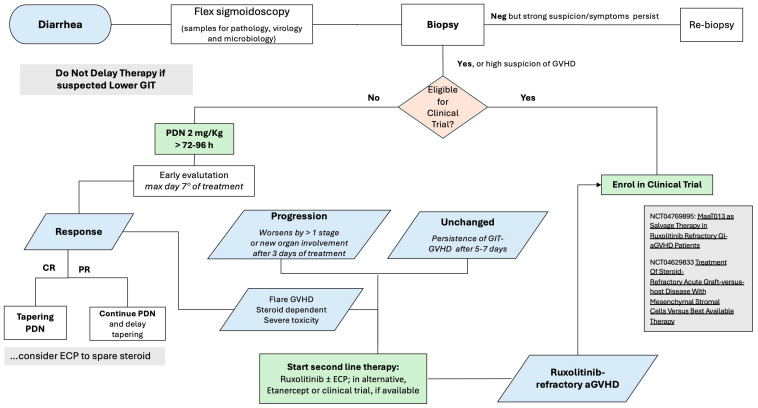Figure 3.
How we manage GIT-GVHD. Proposal of a clinical algorithm for managing patients with grade II–IVlower GIT aGVHD: first of all, do not wait for histologic confirmation in case of suspected GIT GVHD; check the chance to enroll the patient in a clinical trial: if not, start immediately standard first-line therapy with PDN 2 mg/kg and monitor response every day. If worsening after 72 h or without improvement after 5–7 days, a treatment change is strongly suggested (check again for a clinical trial availability). In the case of CR, a quick steroid tapering (or a slow tapering in the case of PR) should be considered; in our personal view, we consider the early ECP association in order to allow an easier steroid tapering, preventing possible flares and reducing the risk of infections. The standard second-line treatment is represented by Ruxolitinib (Etanercept or ECP represents possible alternative treatments), but enrollment in clinical trials (if available) is a valuable option both in steroid-refractory and in Ruxolitinib-refractory aGVHD. Fecal Microbiota Transplant or Mesenchymal Stem cell infusions are currently under evaluation: 1—NCT04769895: MaaT013 as Salvage Therapy in Ruxolitinib Refractory GI-aGVHD Patients; 2—NCT06075706 Treatment Of Steroid-Refractory Acute Graft-versus-host-Disease With Mesenchymal Stromal Cells Versus Best Available. GIT, gastro-intestinal tract; Neg, negative; PDN, Prednisone; CR, complete response; PR, partial response; ECP, Extracorporeal Photopheresis.

